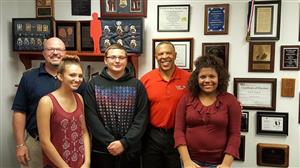Making Invisible Histories Visible
Page Navigation
- Making Invisible Histories Visible
- Lesson Plans and Resources
- iBooks on Omaha and Nebraska History for Primary Students
- Omaha Mapping Projects
-
African American Histories
- African American Artists
- African American Athletes & Facilities
- African American Churches
- African American Civil Rights Organizations - 1950s-1960s
- African American Civil Rights
- African American Contributions to Jazz, Gospel, Hip-Hop
- African American Dramatic Arts
- African American Education - Dorothy Eure & Lerlean Johnson
- African American Educators & Education
- African American Firefighters
- African American Homesteaders
- African American Law Enforcement
- African American Migration to Omaha
- African American Musicians of Omaha
- African American Newspapers
- African American Owned Businesses
- African American Politicians
- African American Social Life
- African American Workers at Omaha's Railroads & Stockyards
- African American Workers at the Naval Ammunition Depot in Hastings
- African Americans in the Civil War
- African Americans in Vietnam
- Charles B. Washington - Journalist and Civil Rights Leader
- Elizabeth Davis Pittman - Lawyer/Judge
- Green Book Omaha
- Marlin Briscoe - Professional Football Player
- Native Omaha Days
- Nebraska's Role in the Underground Railroad
- Sen. Edward Danner - Politician & Civil Rights Activist
- Sudanese Refugees
- Tuskegee Airmen
- European and Asian Immigrant Histories
-
Historic Neighborhoods & Buildings
- 24th and Binney/Wirt/Spencer Streets
- 24th and Lake Streets
- Central Park Neighborhood - 42nd and Grand Avenue
- Dahlman Neighborhood - 10th and Hickory Streets
- Hartman Addition Neighborhood - 16th and Williams Streets
- Indian Hills/Southside Terrace Neighborhood - 30th and Q Streets
- Jefferson Square Neighborhood - 16th and Chicago Streets
- Long Neighborhood - 24th and Clark Streets
- Orchard Hill Neighborhood - 40th and Hamilton Streets
- Smithfield Neighborhood - 24th and Ames Avenue
- St. Mary's Neighborhood - 30th and Q Streets
- Latino Histories
- Music Histories
-
Native American Histories
- Black Elk and John G. Niehardt
- Chief Standing Bear and Susette La Flesche Tibbles
- Dr. Susan LaFlesche Picotte - Native American Doctor
- Native American Education and Boarding Schools
- Native Americans in the Military
- Pre-statehood Interaction of Native Americans and Europeans
- Preserving Native American Tradition
- Restoring the Ponca Tribe
- The American Indian Movement in the 1960s and 1970s
- The Indian Congress at the 1898 Trans-Mississippi Exposition
- The Omaha Native American Indian Tribe
- OPS Elementary School History
- Redlining in Omaha
- Nebraska's Role in the Underground Railroad
- The 1898 Trans-Mississippi Exposition
Refugee - Karen and Ghana Music
-
How is New American music creating a bridge between new and established communities in Omaha?
History in the Making: The Sounds and Voices of New Americans
-
The city of Omaha has an established history of white ethnic immigration, but the stories of recent immigrants and refugees remain largely unknown. According to the U.S. Census Bureau, foreign-born people make up just over 10 percent of Omaha’s population in 2018. Similarly, data from the Pew Center for Research states that Nebraska takes in more refugees per capita than any other state in the U.S. In recent decades, while Latinos have been the fastest-growing segment of the immigrant population, people from Southeast Asia and Vietnam, the former Soviet Union, Bosnia, the Middle East and Africa have also settled in our communities, dramatically changing the complexion of Nebraska. In Omaha, some of the largest refugee groups come from Sudan, Somalia, Nepal, Burma, Thailand and Bhutan.
Just as earlier immigrants have done, new Americans bring with them traditional culture, such as language, food, clothing, music and religion. The Joslyn Art Museum's World Refugee Day, Benson's New American Arts Festival and Afromaha’s African Cultural Festival are events intended to highlight new refugee and immigrant cultures and communities and to encourage established Omaha residents to learn more about their new American neighbors.
Music is a particularly powerful way that new immigrant and refugee communities strive to maintain their ethnic identity, preserve connections to their countries of origin and build a sense of community within the larger American society. This project reinforced our belief that music is a universal language. Amid a variety of differences, including language, experience, and religion, music speaks to universal human experiences, trials and aspirations. Even though many of the new groups in Omaha are still planting roots in our city, the sounds of new Americans are growing and transforming Omaha in diverse ways. We enjoyed interviewing these refugee and immigrant musicians and learning about their cultures, music and the refugee experience. We recommend that everyone take a listen and learn more about one another.
Published during the Summer of 2018
History in the Making, is about the music of refugees and new Americans. This documentary explores the connection between music and culture. The documentary can also be viewed on YouTube.
South High School
-
Since 1898, South High has provided education for both new and established families in the community. In 1984, South High became a fine arts magnet school. Over the years, OPS and the South Omaha community have repeatedly renovated South High to meet the needs of the students. Karen musician Richard Kyaw graduated in 2012 from South High School and taught us about the many resources available at South for new Americans. Some of the resources provided to Kyaw at South included daily piano lessons as a class for credit, opportunities to be an audience member and performer at the Holland Performing Arts Center, and participating in a Master Class with a world-renowned pianist. South High School is located on South 24th Street and provides education for grades 9-12. (Image Courtesy of the Omaha World-Herald)
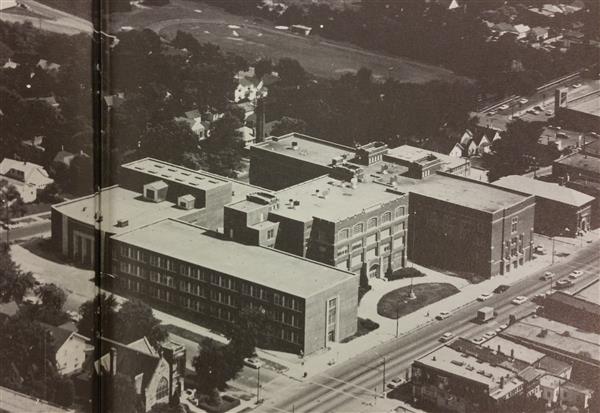
Joslyn Art Museum
-
Sarah Joslyn dedicated The Joslyn Art Museum as a memorial to her husband, George Joslyn, in 1931. It is located near downtown Omaha at 2200 Dodge St. The family supported many organizations for the youth and elderly, including immigrants. Examples include the Visiting Nurses Association, the Child Saving Institute, the University of Omaha, the YWCA, and the Humane Society. After she died, she gave $7 million to the museum, which is equivalent to $83 million in 2018.
The Joslyn Art Museum is admired by people around the world. It is the host of World Refugee Day in Omaha, which is put on by the Omaha Refugee Task Force. Refugees from around the world living in Omaha come to celebrate their cultures and traditions. They bring their music, instruments, dances, languages, food, and clothing. In addition, there is a naturalization ceremony, Karen and Bhutanese dance, a fashion show, photography exhibitions, a health fair, and presentations from former refugees. (Image Courtesy of the Joslyn Art Museum)
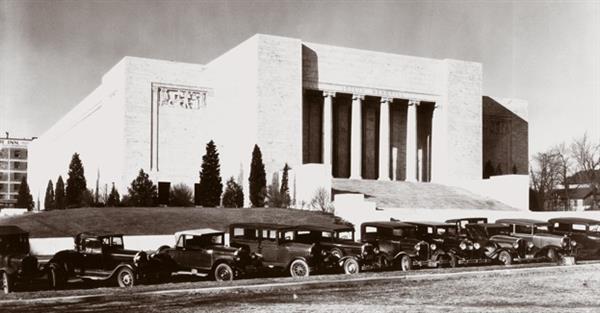
Tana
-
The tana is a traditional Karen harp. The tana is different from the Western harp, as it is not strummed, it is plucked, and sounds different than Western stringed instruments. The tana is made of wood and metal. The Karen use the tana to provide entertainment and to share their history with each generation. Poems detailing the history and shared experiences of the Karen are sung while the harp is played, often by a separate musician. (Image Courtesy of the Karen Society of Nebraska and the Nebraska History Museum)
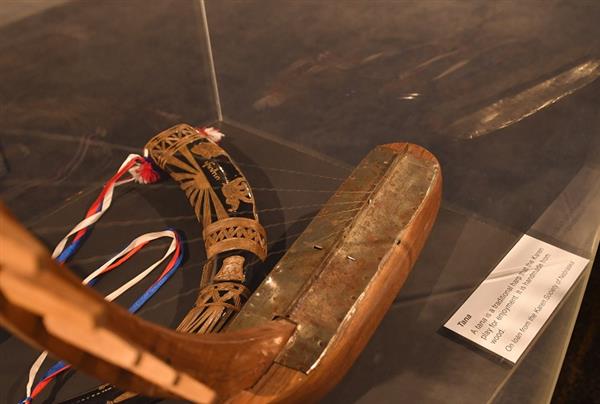
Don Dance
-
The don dance is a traditional Karen dance that is passed on from generation to generation and performed for enjoyment and entertainment. Every year there is a don dance competition between the villages to see who is in the top three. Competitions usually occur on the day of the wrist tying ceremony and start around noon and end at midnight. The dancing clothes should be bright, so the audience can see the performers. Depending on the competition, there are 24 or 32 people, with equal numbers of boys and girls. The groups sing, dance, and play instruments. Image Courtesy of World Refugee Day Omaha
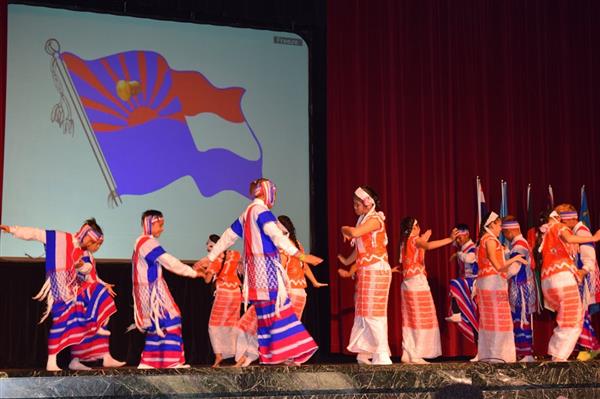
Djembe Drum
-
The djembe is a type of African drum. The djembe drum’s body is made out of wood, and each djembe has its own special design and significance. The djembe’s drum head is created from animal skin, and is attached to the wooden drum by various materials like rope or metals. There are many different ways to hold the djembe drum, and the sound changes depending on how you strike it. Edem K. Garro uses the djembe to create original, Ghanaian soul music.
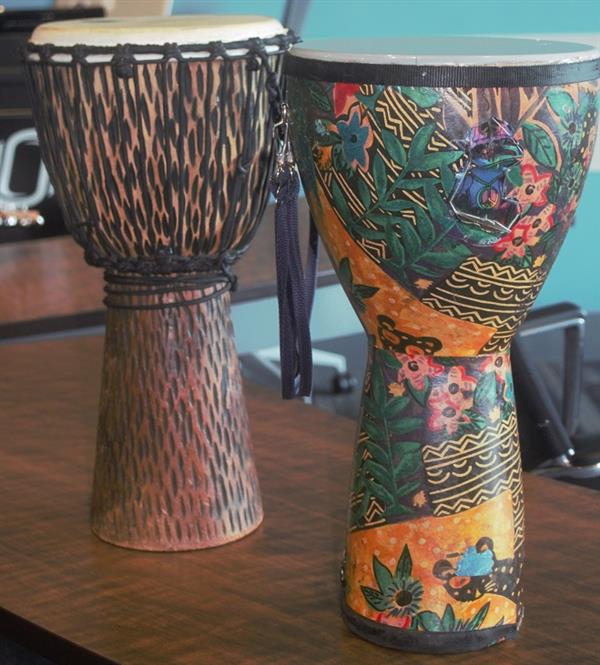
Edem Soul Music
-
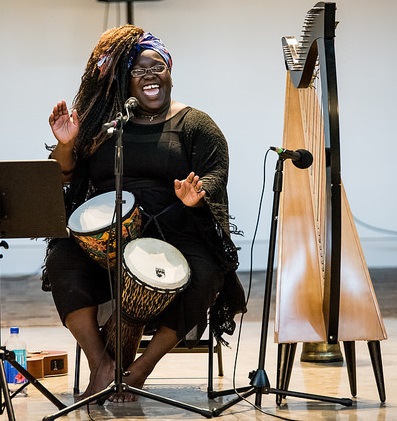
This 2017 photo shows Edem K. Garro, owner of Edem Soul Music, playing her traditional West African drums, the djembes. The significance of this photo is to show how passionate Edem is to perform her new American music and bring it to the surface. In the photo, she is playing her instruments, which is important in creating her new American sound. Her music is not just Western music or Ghanaian music; her music is combined to make her own new American sound. She takes concepts from her culture to create this blend of music. Examples of these include songs written on "hewaleh," or "strength," and "hejoleh," or "peace," in Ga. (Image Courtesy of Emma Petersen and hearnebraska.org)
Additional Information
-
Refugees are people who have been forced to leave their countries due to war, violence or persecution because of their ethnicity, religion, or political affiliation. While Omaha has an established history of being home to a variety of immigrants, refugee history is not as prevalent. After the Vietnam War, Nebraska began accepting refugees and has grown to accept more refugees per capita than any other state. Five countries provide two-thirds of refugees resettled globally, those countries being Syria, South Sudan, Afghanistan, Somalia and Myanmar (Burma). Unlike immigrants, refugees have been unwillingly relocated from their homes and communities and have little to no input on where they will be placed once granted refugee status. Some refugees, such as those from Burma, have spent years living in refugee camps.
Since its founding in 1854, Omaha has been a community of immigrants. The Homestead Act of 1862 lured people to the territory with the promise of free land, but many settled in towns and cities, such as Omaha. The end of the 19th century ushered in another increase in white European immigrants as people came to Omaha for industrial jobs in the meatpacking industry, brick manufacturing, and occupational opportunities with the railroad. The early 20th century, Omaha witnessed the Great Migration, the occurrence of African American families from the south migrating north in search of equality and better living conditions. Immigrants to Omaha in the late 20th century largely originated from Latin America and often moved to the same neighborhoods that early migrants had inhabited.
The number of people accepted as refugees is influenced by the current political climate and the administration's policies. Rarely is the policy impacted by the number of refugee applications. By the end of 2017, 68.5 million people worldwide had been forcibly displaced, a 2.9 million people increase from the previous year. Despite the increasing number of refugees, the number accepted into the United States has decreased dramatically. President Barack Obama set the refugee ceiling at 110,000 for 2017. However, only 53,000 were accepted under the Trump administration. This year (2018), Trump set the ceiling at 45,000, the lowest it has been in 30 years. In 2016, Nebraska became the leader in resettling the most refugees per capita, with 76 refugees per 100,000 residents. Some of these refugees came from Syria, which raised concern for Nebraska officials. Governor Pete Ricketts in 2016 encouraged a stronger screening process which resulted in the number of refugees resettled in Nebraska dramatically decreasing in 2017. The number was expected to be four in November and 20 to 30 total from November to March. This is in part due to Trump’s travel ban on Venezuela, Somalia, Yemen, Libya, Chad, Iran, North Korea, and Syria.
African refugees often find safety in other African countries, but neighboring African countries struggle to accommodate the millions of refugees in need of homes. Countries such as Ghana and Uganda are taking in refugees from other countries, but the political and economic situation in South Sudan caused by an ongoing civil war has created more than two million refugees. The sheer volume of refugees in Africa has created a refugee crisis, and while few refugees make it to America, many of those that do, end up in Omaha. Omaha is the home of the largest South Sudanese population outside of Africa.
Omaha has the largest and fastest-growing Karen population in the United States due to reunion with families and employment opportunities. The Karen are an ethnic group from Burma and Thailand who have been subject to ethnic cleansing and persecution from the Burmese government. After being relocated to refugee camps in Thailand, they have been resettled in Nebraska. There are currently 5,500 Karen living in Omaha in 2018. Refugees enter the U.S. from all around the globe and bring aspects of their cultures with them. Immigrant and refugee music influences American music at every level, from the sounds we hear in our cities and communities to the music we hear on the national radio stations. The instruments, singing styles, scales and other aspects of music may differ, but even with a language barrier, humans can sense the emotion and intent of music. The history of the Karen people is passed down through sung poetry. Music is essential for, not only the Karen, but also other cultures to maintain their identity and feel a sense of unity within their new communities. A universal way to connect with one another, music provides an avenue for established community members to gain a deeper understanding of the refugee populations. As Omaha continues to welcome refugees, new American sounds will continue to grow and expand in our community.
2018 MIHV Project
“Hewaleh” by Edem Garro
-
Edem Garro is a first-generation Ghanaian American, singer, songwriter, musician and performer. Hewaleh means strength in Ga, so the song is meant to bring strength to the audience. In "Hewaleh", Edem uses vocals and drums to create a New American music. "Hewaleh" is a combination of Ghanaian and American music.
Student Reflections
-
"The program is actually fun and we learned lots of things about New American history and music…I hope that one day we can do a program like this in high school."
- Eh Mu
"We set out on our journey around Omaha for interviews that turned out amazing. We made a great team as our connection grew closer."- Lwe H.
"I learned I could be braver than I thought."- Kleh S.
"We interviewed people and got to know about their culture and musical background…I learned that I can be fluent in both languages that I know….Meeting new people was a fun experience."- Eh Tha Y.
"From history to life skills. I thoroughly enjoyed this program and would recommend going to meet new people and learn so much."- Colette A.
"I feel I’ve grown as a person…in a few ways. I've learned a lot and matured a lot through this experience."- Virginia H.
"Every day there is something new to overcome and I love it. I’ve never had the chance to experience new things and meet new people."- Trey N.
Resources
-
Bhalla, Nita. U.N. Sounds Alarm on South Sudan as Africa's Biggest Refugee Crisis... Reuters, Thomson Reuters, 1 Feb. 2018.
Grace, Erin. Nebraska's Recent Refugee Resettlement Numbers Are 'as Bad as It Can Get,' Official Says. But Plenty of Work Remains. Omaha.com, 1 Nov. 2017.
Karen Society of Nebraska, Inc. Karen Society of Nebraska.
Nohr, Emily. A Welcoming State': Nebraska Led the Nation in Resettling Most Refugees per Capita in the Last Year. Omaha.com, 9 Dec. 2016.
Refugee Statistics. Refugee Crisis in Yemen: Aid, Statistics and News | USA for UNHCR.
South Sudan Refugee Crisis: Aid, Statistics and News. Refugee Crisis in Yemen: Aid, Statistics and News | USA for UNHCR.
United Nations. Refugees. UNHCR.
Research combined by Eh M., Eh Tha Y., Kleh S., Lwe H., Trey N., Colette A., & Virginia H.
Students who worked on the project will attend high school at Omaha Benson, Burke, Central, North, and Northwest High Schools.
